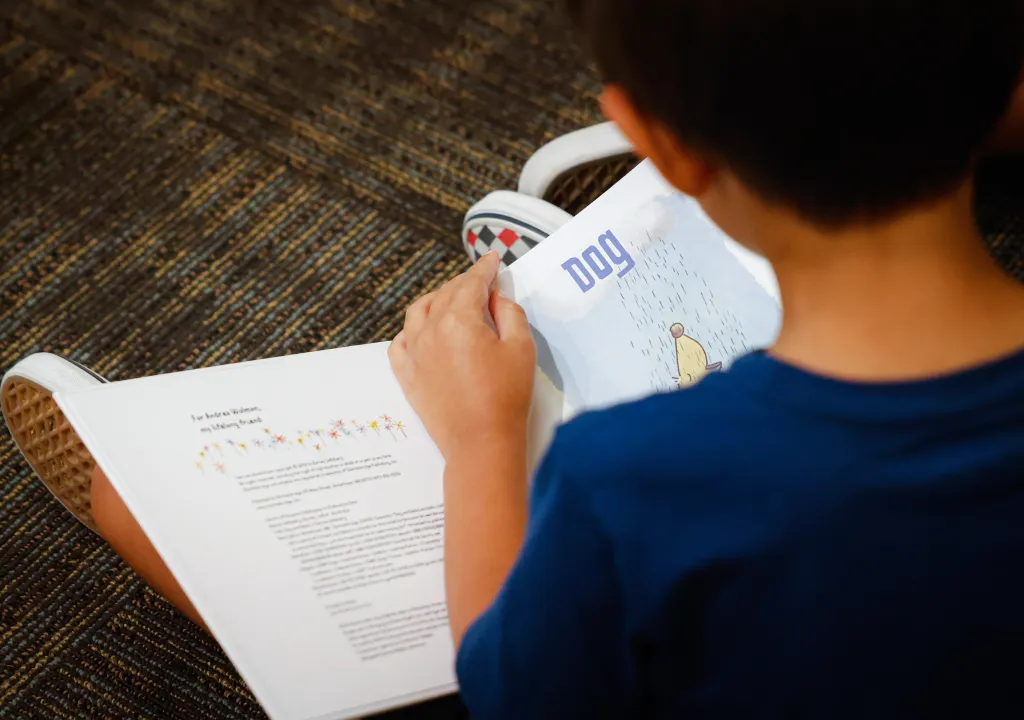
Gov. Gavin Newsom signed historic legislation Thursday morning that implements evidence-based reading instruction in California classrooms, as newly released test scores reveal California students saw modest gains across subjects.
The bill, AB 1454, adopts new evidence-based reading instructional materials and updated professional development and training for educators. Also known as the “science of reading,” evidence-based reading teaches students how to read by emphasizing skills like phonics and vocabulary rather than word recognition and memorization.
Newsom said the bill was ” long overdue” and builds on more than $600 million in investments the state has made in recent years to support literacy improvements, including through literacy coach and reading specialist training, dyslexia screening, pandemic recovery, and high-impact tutoring. Newsom said AB 1454 is a companion bill to the one-time funding of $200 million he recently approved in the state’s budget for optional elementary school teacher training in evidence-based reading instruction.
“These investments are starting to produce real results,” Newsom said Thursday. “Yes, good enough never is. And no, we’re not satisfied with where we are…It’s a good start.”
The legislation, co-authored by Assembly Speaker Robert Rivas, who represents Salinas, and Assemblymembers Al Muratsuchi of Torrance and Blanca Rubio of Baldwin Park, comes as newly released statewide test scores revealed California students saw modest gains across English language arts, science and math.
Statewide, the number of students who met or exceeded grade-level standards increased 1.8 percentage points in English and math, to 48.8% and 37.3% and two percentage points in science, to 32.6%. Socioeconomically disadvantaged students also showed across-the-board gains, with about a 1.4 percentage point increase in the number of students who met grade-level standards in English to 38% of students, a 1.2 percentage point increase in math to 26% of students and a 1.6 percentage point increase in science to 22% of students.
The state testing data follows national testing data released last month, which revealed high school seniors across the country had historically low test scores in reading and math. And national testing data released earlier this year revealed that California fourth- and eighth-grade students continue to trail their peers in other states in math and reading scores, showing that the state’s students’ post-pandemic learning recovery has been especially slow compared to students across the nation.
The newly released state testing results come from the latest Smarter Balanced Assessments in English and math and the California Science Test, which students took in spring 2025. The assessments are computer-based, standardized tests used in several states, including California, to measure students’ understanding of content benchmarks in the three subjects.
Newsom signed AB 1454 from a classroom in the Los Angeles Unified School District, which saw an impressive jump in students’ test score performance — more than three percentage points across all subjects and the highest performance levels ever recorded for the district. Across all subjects and grade levels, student performance in LAUSD not only surpassed results from last year but also exceeded pre-pandemic scores from 2018-19 — an impressive feat that is rare among California school districts.
But in the Bay Area, schools didn’t see as significant of a jump. San Jose Unified School District saw slight gains in math and science, with about a 1 percentage point and 2 percentage point jump in both — to 41.9% and 38.7% of students meeting or exceeding grade-level expectations — and a barely-there 0.2 percentage point jump in reading to 49.8%. Oakland Unified School District saw similar results, with a little more than a 1 percentage point jump in math and science — 26.9% and 21.6% of students meeting or exceeding standards — and about a 0.5 percentage point jump in reading to 33.6% of students. Fremont Unified School District saw even smaller gains but students performed much higher, with a nearly 2 percentage point jump in science to 60.7% of students meeting or exceeding standards but only a 0.06 percentage point increase in math — 68.5% — and a 0.06 percentage point decrease in reading — 73.4%.
The California Department of Education said the state’s scores revealed further progress in closing equity gaps for socioeconomically disadvantaged students and minority students. The state department also said the modest increases for all of California’s students were at a higher rate than last year, suggesting growing momentum.
“Some growth is modest and some is profound, but in all cases the data reflects the impact of these investments and the hard work of educators to help students succeed,” said State Superintendent Tony Thurmond in a statement Thursday. “We aspire to achieve even greater student outcomes. We are working to secure additional investments to support comprehensive, long-term statewide strategies to further move the needle in student proficiency for years to come.”
But some educational advocates pointed out that while this year’s scores show continued progress, the equity gaps for low-income and minority students are still “unacceptable” and the rate of improvement is far too slow.
“These scores are headed in the right direction — at the wrong pace. California has the right tools to close equity gaps, but we’re not using them boldly enough,” said Christopher Nellum, the executive director of EdTrust-West, an educational advocacy organization. “These gaps are not just persistent, they’re unacceptable. To accelerate gains for students of color and our state we need major policy shifts — not just program tweaks.”